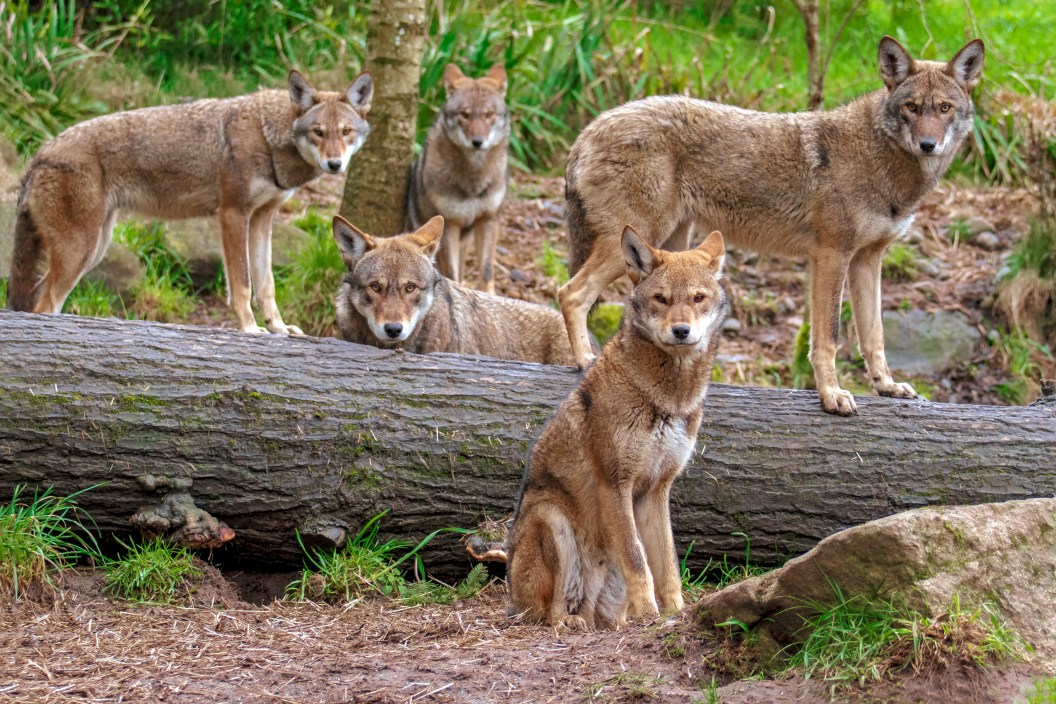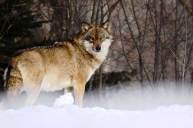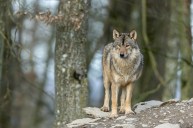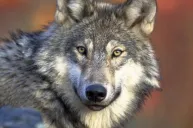North Carolina might not be a state that first comes to mind when thinking of wolf sightings. And as of the last decade, you would be right: While once the heartland of the red wolf, North Carolina now harbors just over 30 wolves, confined to five counties in the entire state.
That's soon to change though, after a lawsuit was recently settled against the United States Fish and Wildlife Service (USFWS) over the wolves' reintroduction to their historic habitat.
Last Wednesday, the USFWS committed to an eight-year plan to boost the populations of red wolves in eastern North Carolina, the species' only remaining range.
This commitment comes after a lawsuit was brought by conservation groups claiming that the USFWS had violated the Endangered Species Act (ESA) by putting red wolves at risk to appease politicians and ranchers.
Red wolves once inhabited most of the eastern US seaboard and as far west as Texas. Like many wolf populations in the country, they were driven to near extinction by hunting and habitat loss. A growing coyote population also helped push the wolves out, competing for resources and space.
A USFWS program to recover the species was launched in 1987, focusing on the release of captive-born pups and the sterilization of coyotes. By 2021, the population had successfully risen to 100. In 2015, however, the agency paused its program that bred and released captive red wolves, saying that it planned on updating the program with more input from scientists, and resume in the near future.
According to The Associated Press, however, the timing of the pause—presumably to update and better the program—coincidentally occurred alongside a was rising pressure "from conservative politicians and landowners who deemed wolves a nuisance."
In 2018, the USFWS took a step further away from its original conservation principles, releasing a plan to shrink the 17 million-acre territory set aside for red wolf conservation and recovery.
The counties in which red wolves still exist are dominated by farms and private land. There is a longstanding enmity between ranchers and wolves. This has led states like Wyoming to have shoot-on-sight laws, presumably to protect livestock.
This hatred of wolves—which is largely unfounded—is what drove many wolf populations to near extinction in the past.
Over the decades since reintroduction in North Carolina, over 96 red wolves have been shot and killed, sometimes being left to gruesome, unethical deaths.
By 2019, the red wolf population had shrunk to 14 known wolves, prompting North Carolina's Governor, Roy Cooper, to send the secretary of the interior a sharp warning: "Changes in management strategies over the last several years have diminished the wild population to a dangerous level," Cooper wrote. "This population decline has occurred despite the availability of proven conservation strategies, such as coyote sterilization and captive wolf reintroductions."
In 2020, the year the USFWS claimed it would resume its reintroduction program and with no new wolf pups seen in the wild for years, the SELC filed its lawsuit.
Now, with the suit finally settled, the USFWS must develop and publish red wolf release plans for the next eight years. Captive-born animals will be released, and the USFWS will continue to attempt to decrease human-caused deaths and sterilize local coyote populations.
Ramon McGee, leader of the SELC's wildlife program, believes the settlement is a huge success. "We hope to see America's wild red wolves rebound again, with generations born free and wild, as a result of this agreement," McGee said in a statement on Wednesday.
READ MORE: Understanding Wolfdogs: What Exactly Are These Hybrids?




